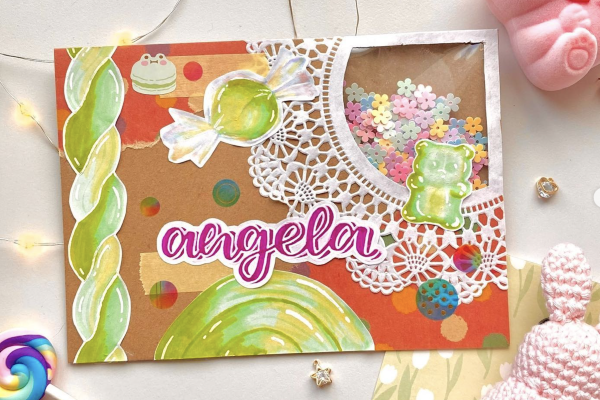“There’s this excitement that comes with receiving something in the mail.”
Kailyn Lee is a senior at Sunny Hills High School and has been penpalling since she was 11 years old. Although the term might draw a simple association, Lee is more than a stereotypical pen pal.
The word pen pal is found to be dated back to 1925, although it’s derived from the word penfriend, which was first dated in 1923. After about a century of using this term, billions of people have corresponded over snail mail, which evolved into communicating over email and then eventually texting. The importance of a handwritten letter has begun to decrease as fewer and fewer people send mail every year, but to pen pals, it will always remain the same.
“It’s so interesting to see what’s going on in their lives,” Lee said. “Writing a letter is more heartfelt than a half-hearted text message that you could send in a few seconds.”
According to the United States Postal Service (USPS), the billions of mail that are sent each year are continuing to decline, dropping the most in 2020 and never recovering.
“We used to be about correspondence but now, because of the internet, we’ve switched over to packages. It’s not so much about correspondence anymore,” said Jolivette Eugenio, who is a Sales and Service/Distribution Associate for USPS.
The concept of sending a letter is simple, but social media has contributed to the evolution of envelope decorating. Nowadays, pen pals will use various types of materials to create colleges on their envelopes and decorate them based on themes or to create designs.
“With social media, penpalling became more of a thing because if it was only the written form, people wouldn’t really post that. Having all these accounts on Instagram, like painting and other types of artwork, penpalling became like a medium too,” Lee said.
The art of envelope decorating is something unique to each pen pal. Although many people gather inspiration from others, each person has their own style. Lee’s favorite thing to create for her pen pals is interactive envelopes, which is something unique to her penpalling style.

“The first one I made had a clear window, and then I started to make confetti windows,” Lee said.
Since then, Lee has expanded her style and is constantly in search of more ways to make her envelopes her own.
“After a while, I started thinking ‘What could I do to make it more interesting than that?’ I started making little sliders and spinny things,” Lee said. “Sometimes I see card tutorials on Pinterest, those are really complicated, and I try to incorporate that into the envelopes themselves.”
English teacher Carolyn Wallace may not penpal the same way Lee does, but she still enjoys the hobby just as much.
“Although my pen pal and I did not decorate envelopes or make flipbooks, we included with our letters all kinds of art, original short stories, and poetry. Every letter we wrote we illustrated with pen and ink drawings,” Wallace said.
Wallace believes that no matter the style, snail mail benefits pen pals of all ages.
“I would say that all generations of pen pals are inclined to express themselves artistically. How I went about it when I was young might well be considered by today’s pen pals as extravagant, too,” Wallace said.
The value of having a pen pal
In a world of digital communication, it is easy to forget about the practice of sending mail.
“People like that instant communication, it’s just so much faster. They want to use the correspondence through the post office because it’s snail mail now,” Eugenio said.
As a postal worker, Eugenio believes in the importance of taking time to write a letter and mail it, no matter how close or far the recipient lives.
“I think it’s more personal if they go through the post office versus online,” Eugenio said. “In a text, all those texts can disappear. If you have correspondence by letter, you can always look back on it. Especially if there was a letter that came from a loved one that’s passed, at least you have something in your hands that is within writing.”
Having spent one year studying abroad and growing up with less access to digital devices, Eugenio holds a place in her heart for penpalling because it allowed her to keep in touch with people from other countries.
“I was able to communicate with these friends for 20 years through correspondence to the point where when they came to the United States, we were able to still see each other as adults,” Eugenio said.
Eugenio also admits to having a bias towards snail mail due to the fact that she loves to write.
“I’m very expressive when it comes to telling a story on paper because I could write two, three pages. I talk a lot, so I ramble a lot in my writing as well and I’m very detailed,” Eugenio said. “It’s not like, ‘Oh, hi. How are you? Okay, goodbye.’ I would say something about myself, then at the end of that paragraph, I would ask, ‘How are you? How is your side?’”
In comparison, Lee’s passion for penpalling goes further than a hobby, as she resonates with the medium on a deeper level.
“I’ve gone through a lot of different arts and crafts in my lifetime, but penpalling is the only one that I would really pour hours into. Especially a couple of years ago, when I was more into it, I would spend the entire day working on something,” Lee said.
Lee hopes to continue the practice in college so she can stay in touch with her close friends.
“I want to communicate with them more than just texting,” Lee said. “You get to put more time and effort into penpalling.”
Wallace agrees that the connection created through and time spent on penpalling is more important than the contents of a letter.
“I saved my pen pal’s art for decades, in a binder. I then sent him the binder of art to enjoy. Unfortunately, his mother threw out the binder, so all of his art was lost,” Wallace said. “I still have not gotten over that.”
Exploring the pen pal community
In addition to the amount of time and work pen pals put into their envelopes, it is important to also remember the social aspect that creates connections across the country, or even the world; through being pen pals or mutual friends on Instagram.
“The penpalling community is really supportive of your work. It’s really cool to see what other people create and get feedback on what you create because you wouldn’t really get that in person,” Lee said. “The friends you have in person, they’re really great, but sometimes you want to expand your circle in an artsy way and meet people with more similar interests that you have.”
After getting into the hobby at such a young age, Lee expanded her connection to the community through Instagram, under the username @milktea.studios.
“I watched ‘penpal with me’ videos because they have real pen pals from around the world, and I thought, ‘hey, that’s really cool,’ so I made a post on Instagram with the hashtag #penpals on it, and a few people reached out,” Lee said.
Since her account’s creation, Lee has gained over 1,000 followers and has corresponded with 14 different pen pals. At the start of her junior year, she decided to start a club at her school to share this passion with her peers.
“People went there to do free crafting because I provided materials, art supplies, and stuff. At every meeting, we have a different theme. It’s usually general things like autumn, or academia, just to kind of guide them,” Lee said.
Through her club, Lee wants to foster creativity and allow people to find their own style of penpalling. She brings different supplies each week so her club members can try different things.
“Sometimes I bring more mixed media papers, sometimes more stickers and washi tape, stamps, things like that. I’ve also brought a few examples of what they can create, both things I’ve received and things I’ve made,” Lee said.
Despite the lessening importance of snail mail, Eugenio still encourages younger generations to continue writing letters.
“Kids these days, they don’t want to write letters, they would rather just use the internet,” Eugenio said. “We as adults, try to implement to the younger kids and say, ‘Hey, you know the writing of your grandparents, this is how they wrote,’ so then they have to appreciate that it’s up to the adults to try to inform and educate the younger kids of what’s important in writing a letter or a note.”



